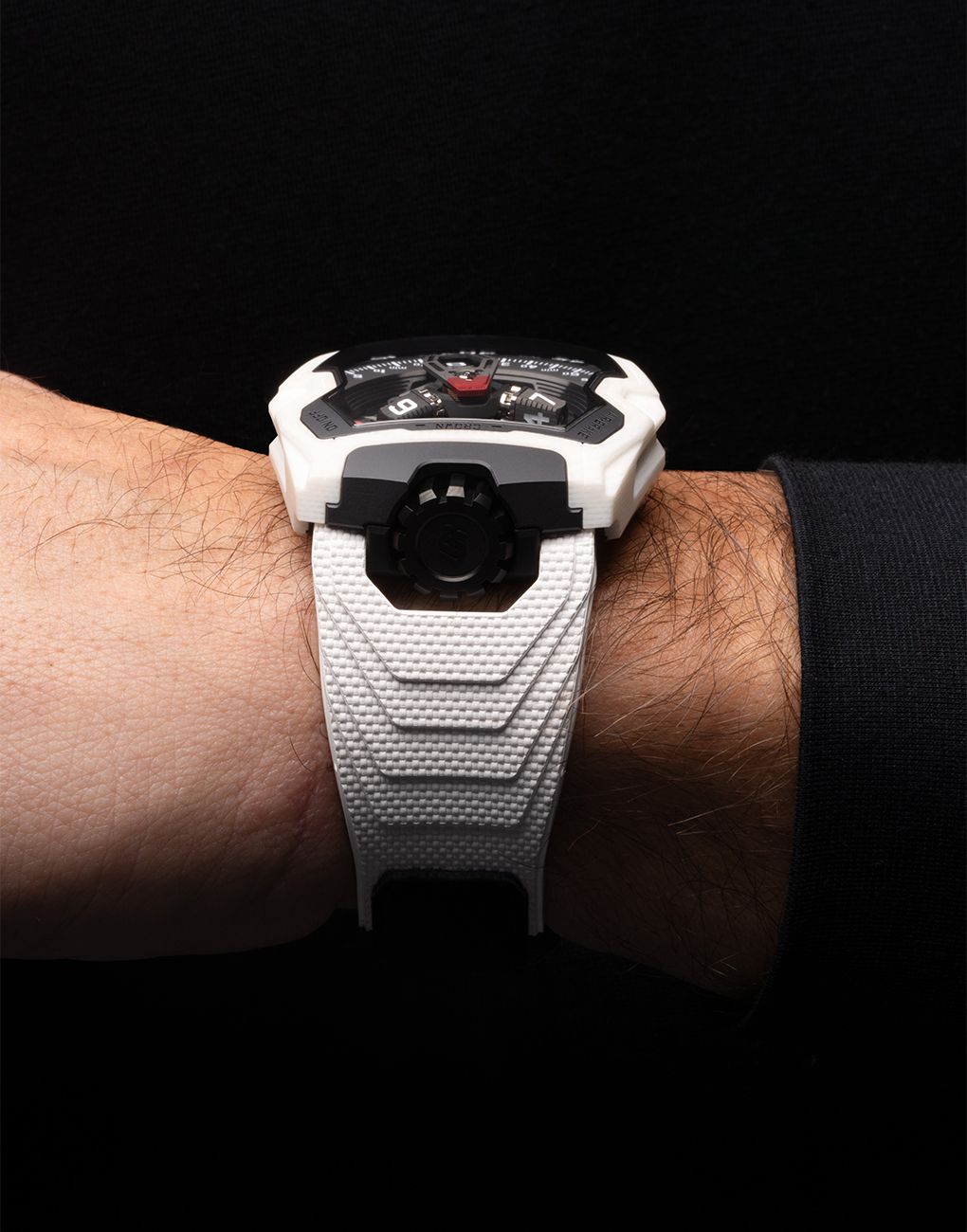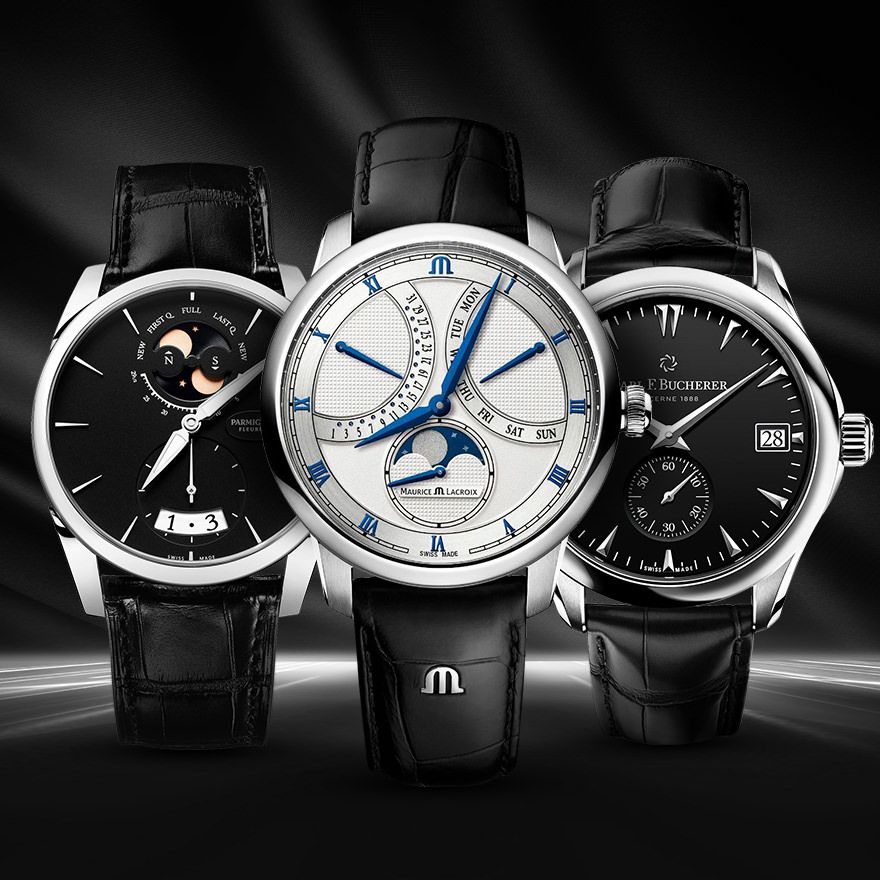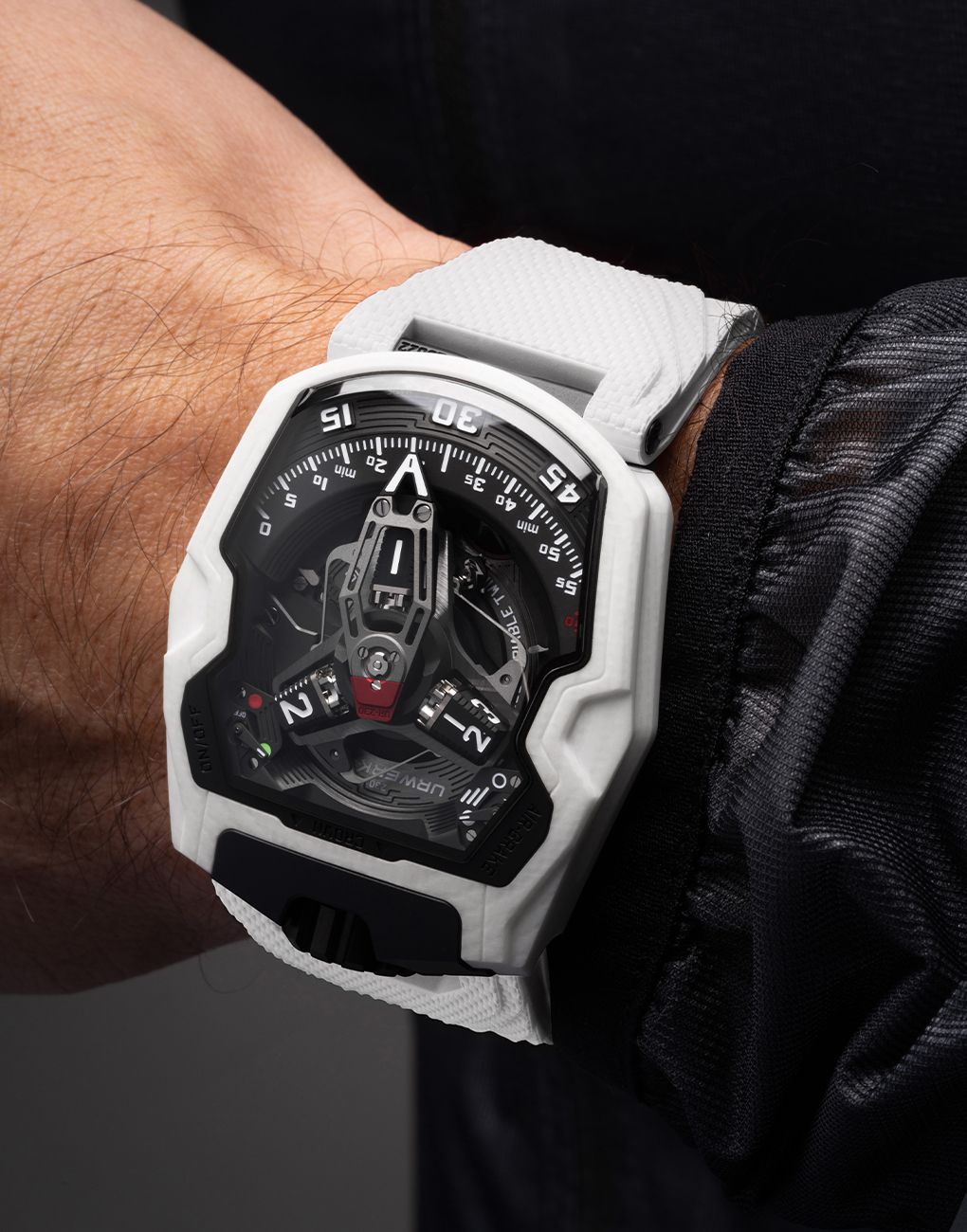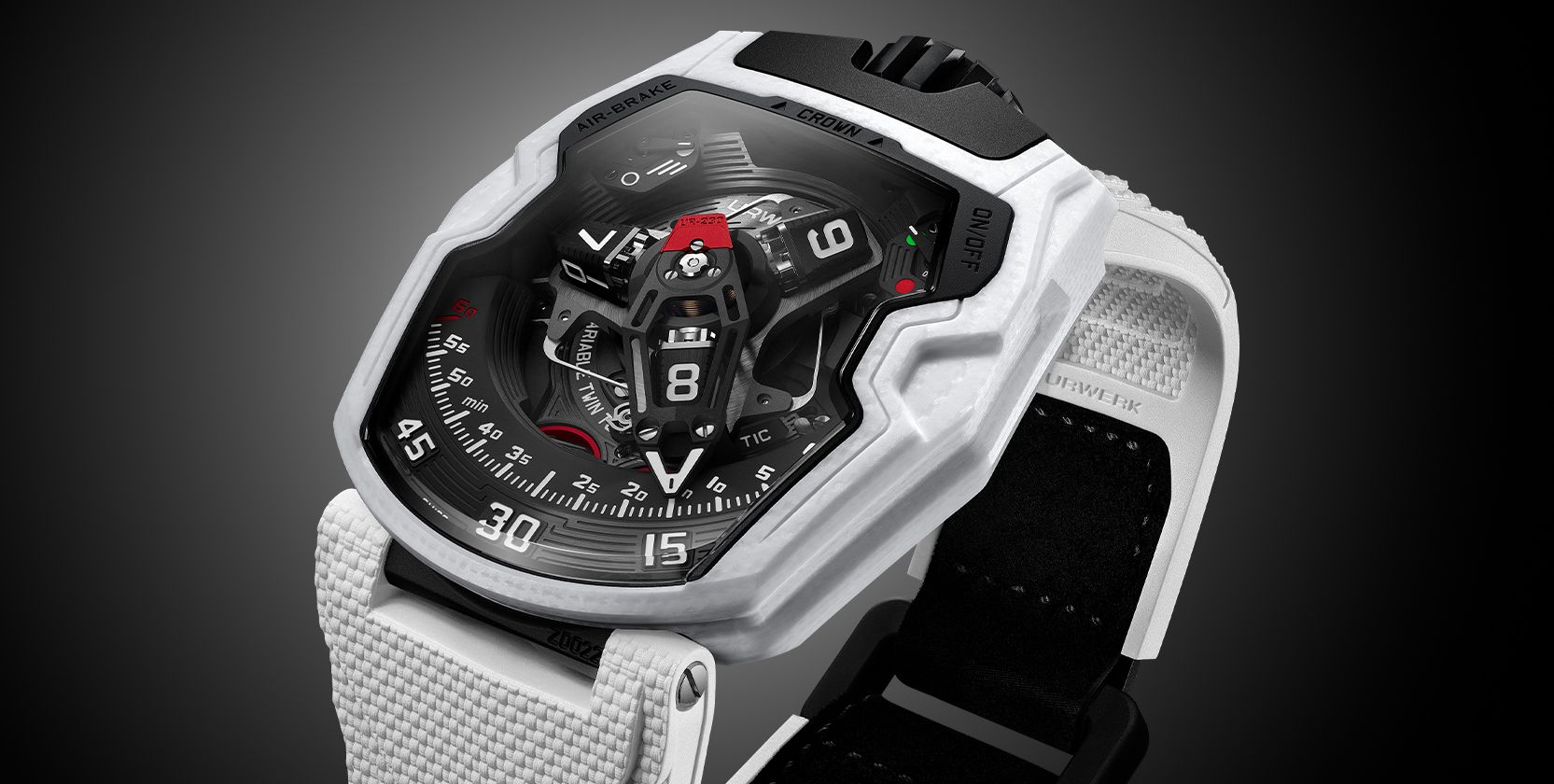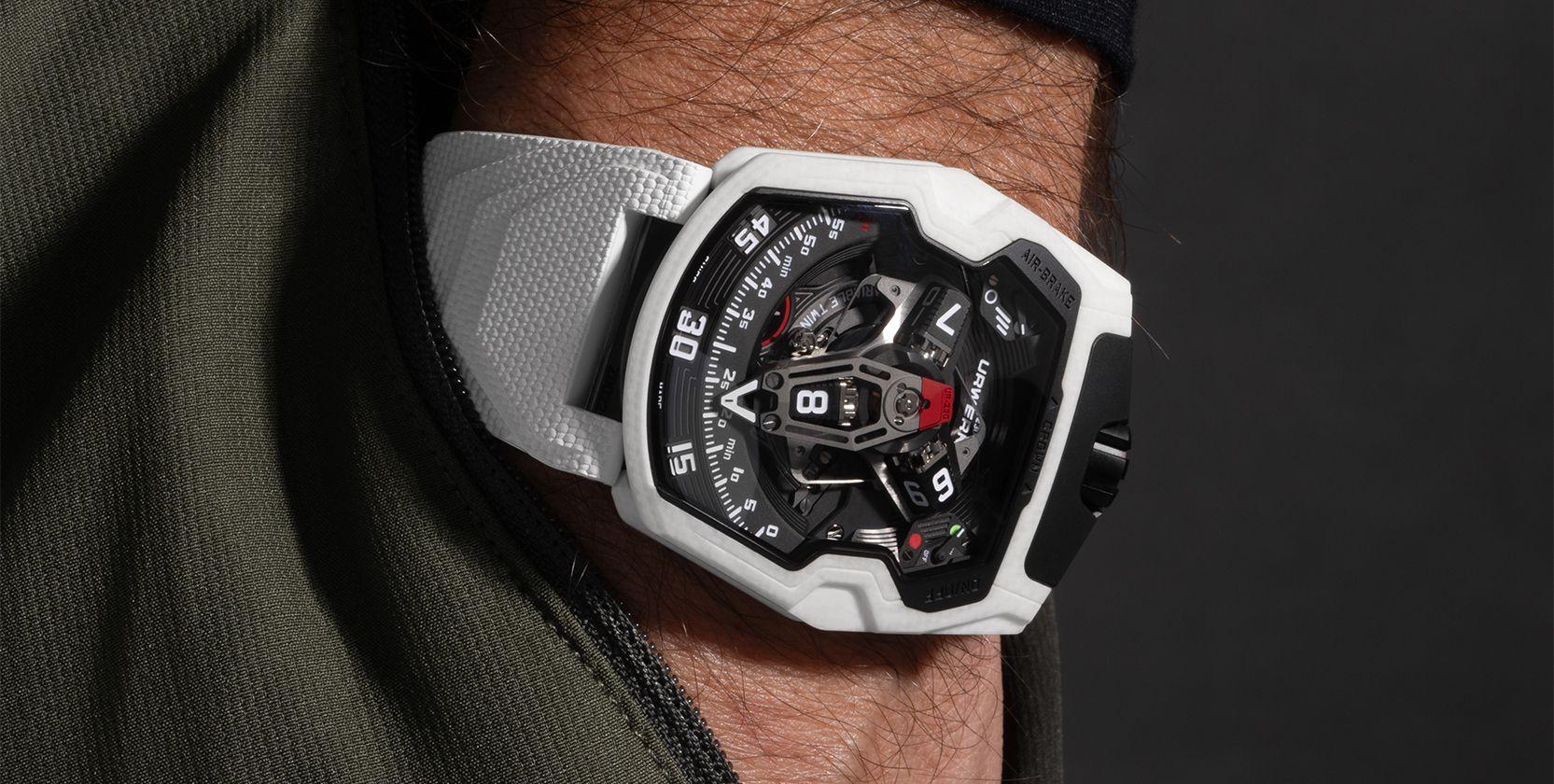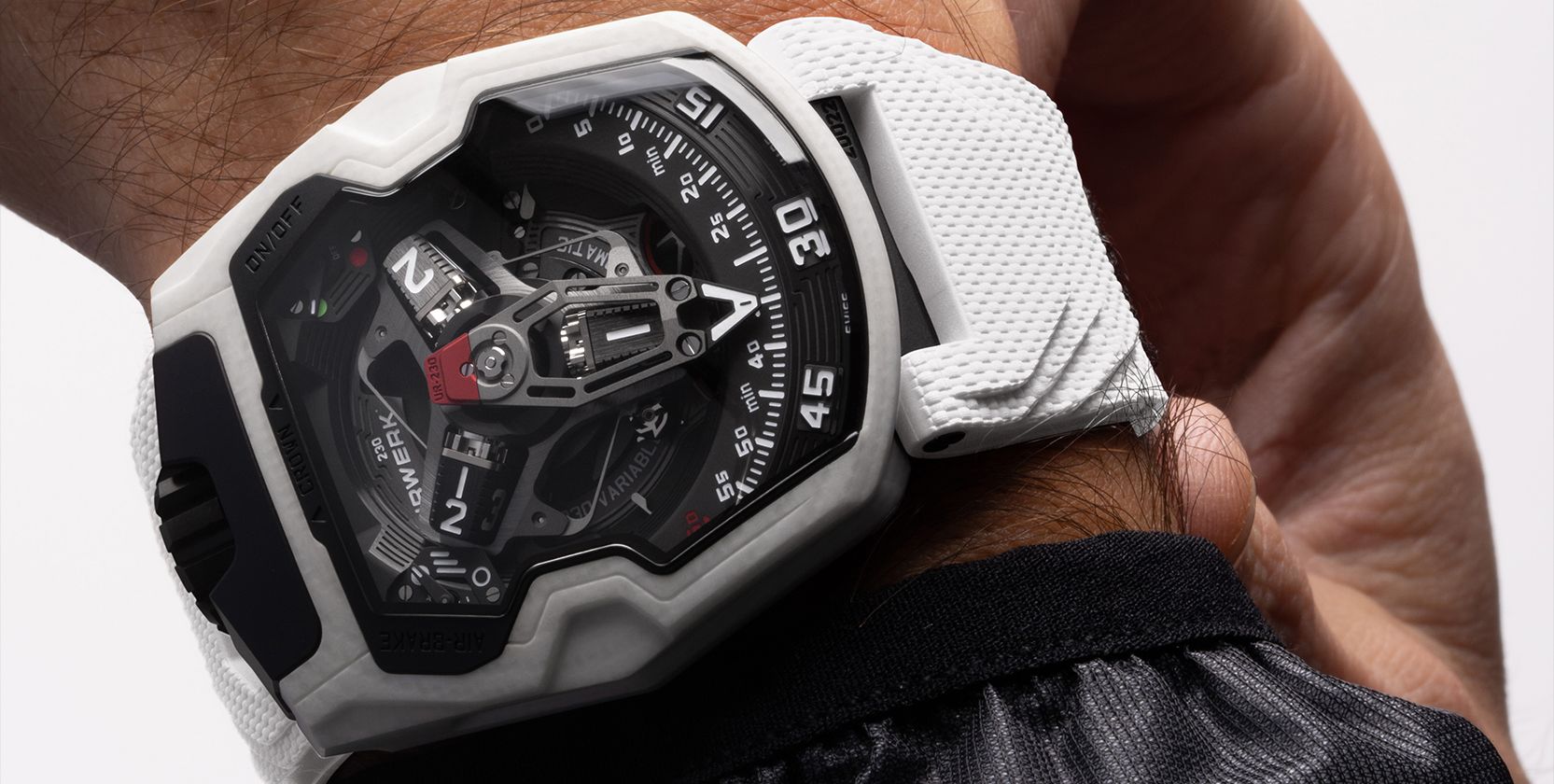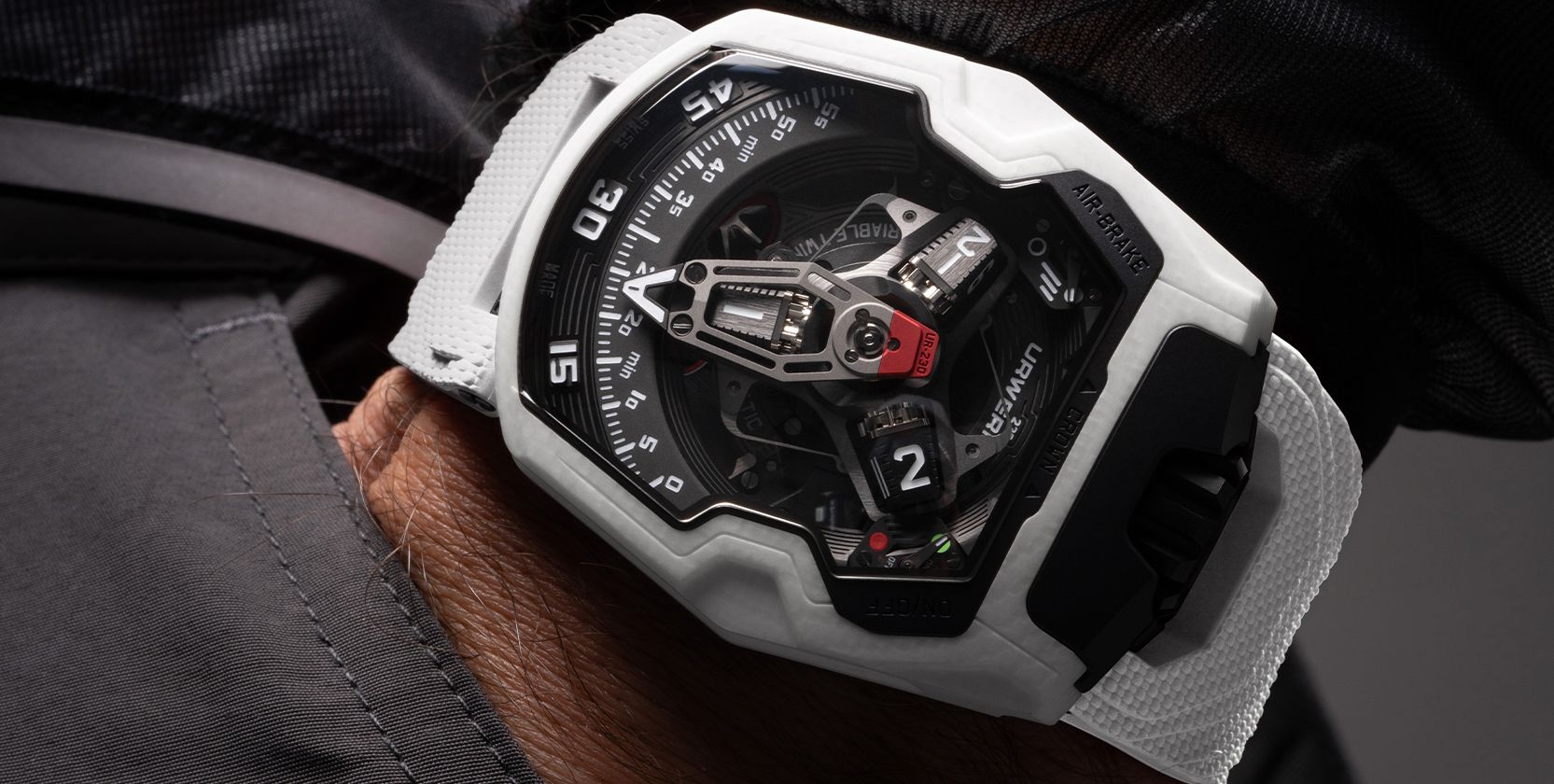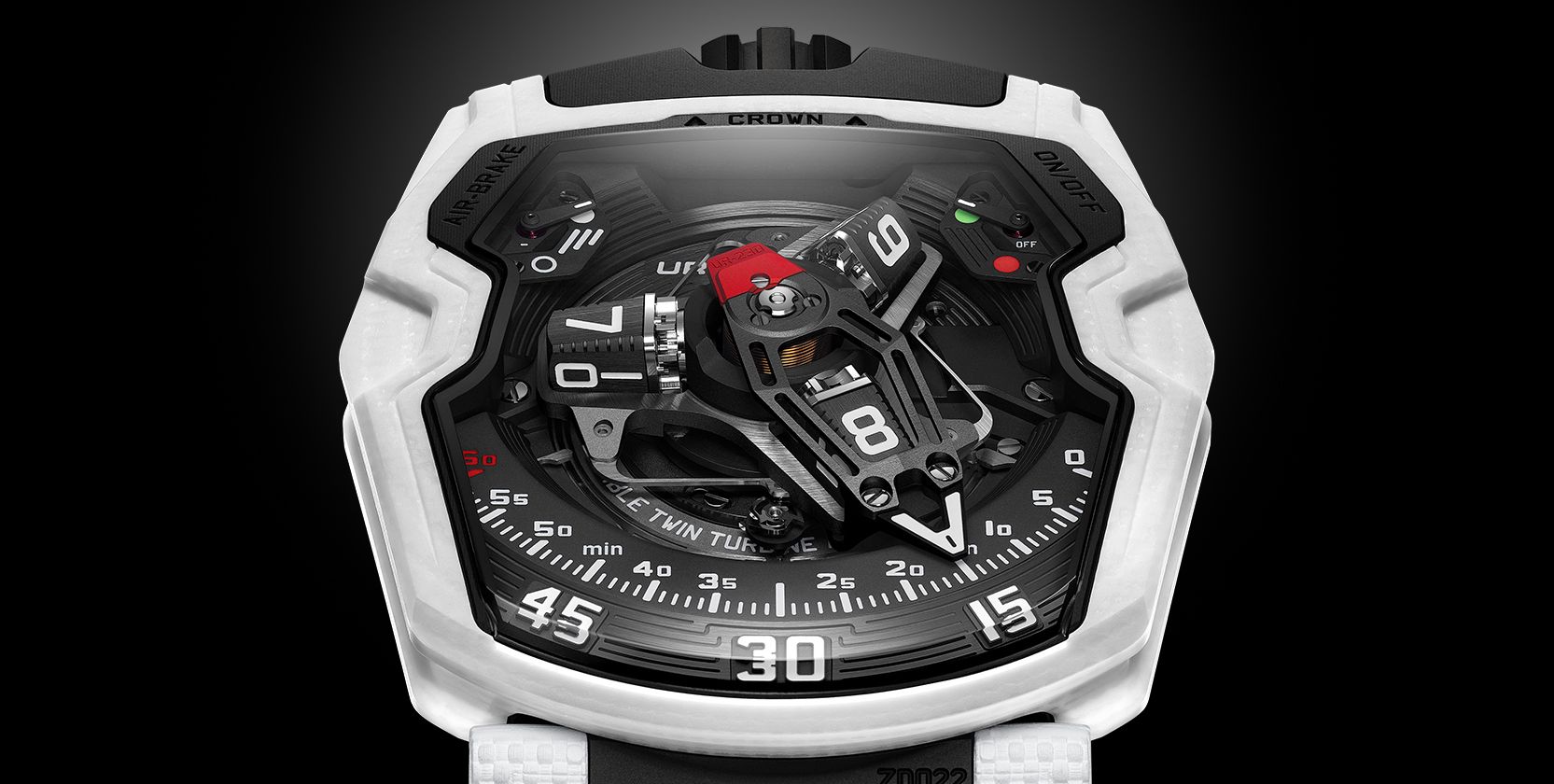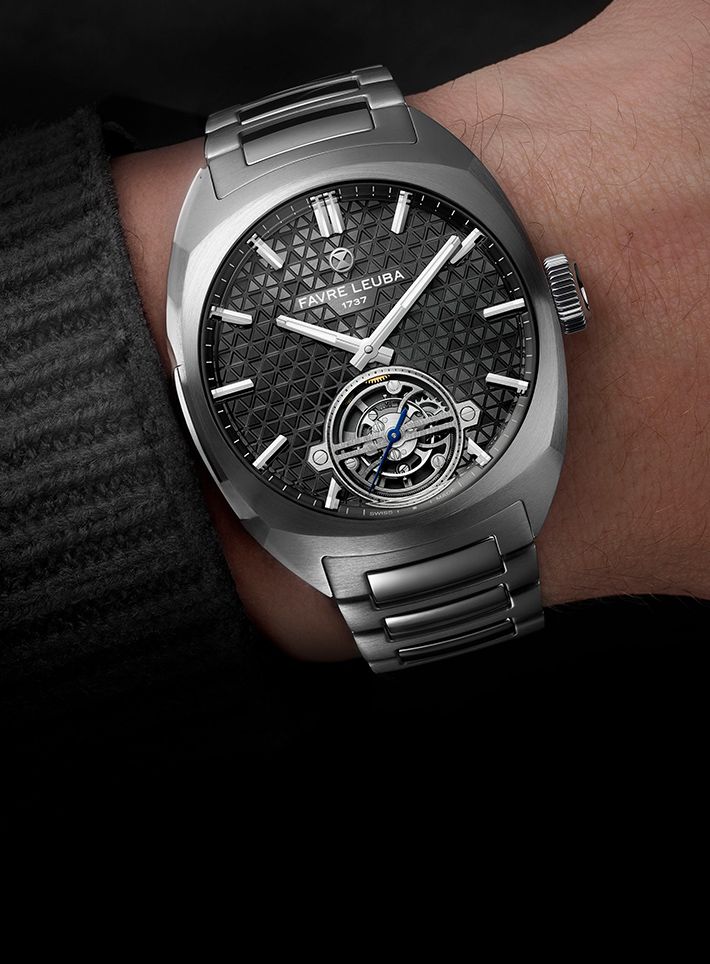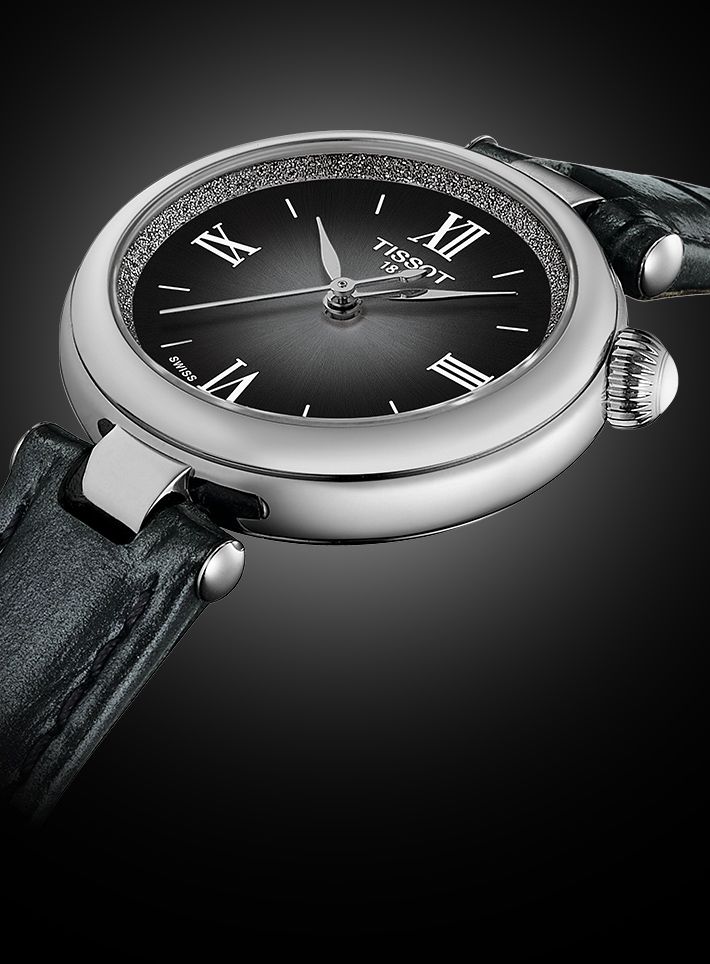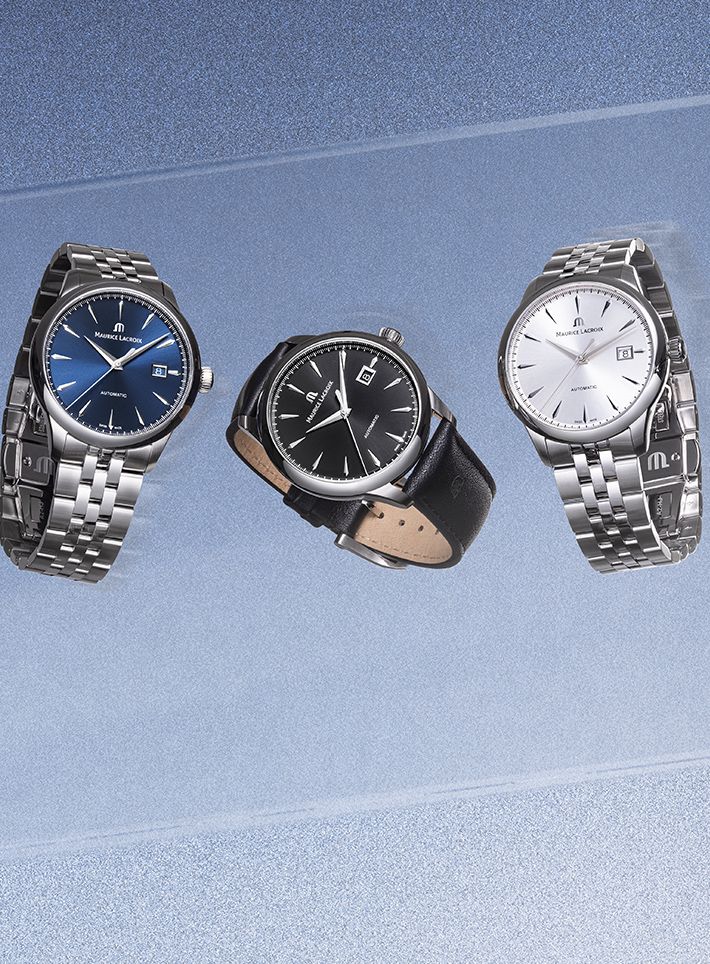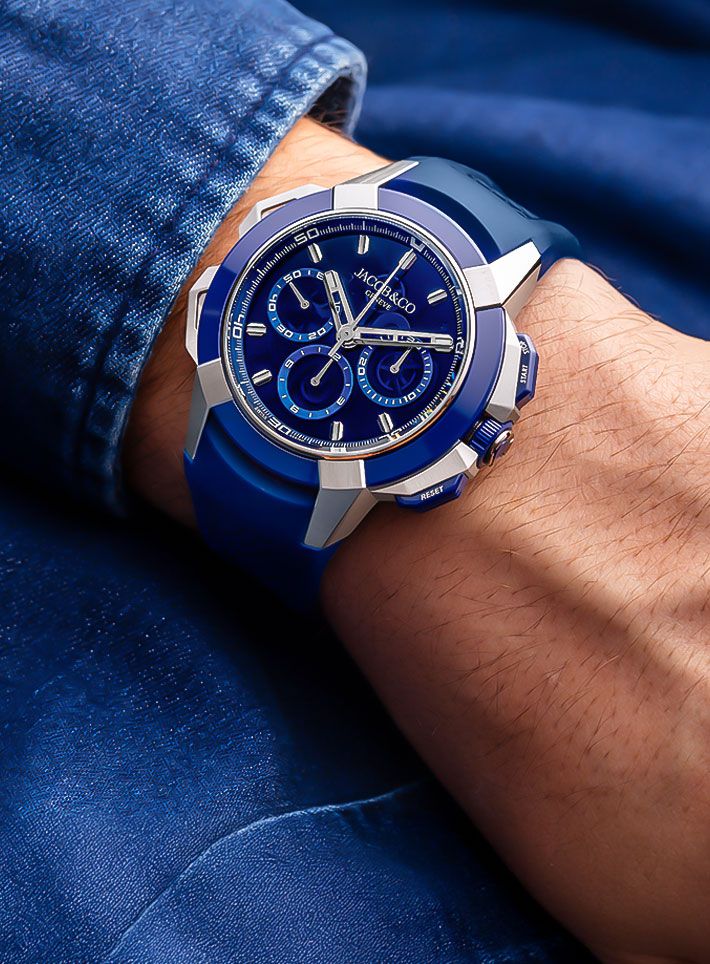Spotlight2024: A Watchmaking Odyssey—With The New Urwerk UR-230 Polaris
Blending futuristic aesthetics with cutting-edge mechanics, the Urwerk UR-230 Polaris redefines watchmaking. Limited to 35 pieces, it embodies the true fusion of art and technology
May We Recommend
“Our main aim is to go beyond the traditional horizons of watchmaking.” Felix Baumgartner, co-founder of Urwerk, expresses his vision and passion for avant-garde watchmaking, much like Stanley Kubrick’s vision of the future, in the path-breaking feature-film—2001: A Space Odyssey. Akin to how both the creators share a futuristic and an unconventional philosophy in their respective art forms, Urwerk’s new UR-230 Polaris borrows its colourway from the breathtaking aesthetics and set designs of the iconic Discovery One spaceship as mentioned in the cult classic. Not only that, it also nods to the use of white as a heat shield in NASA’s Apollo 11 mission; let’s say Urwerk has ‘NASA-fied’ their new creation in a very cool way.
Limited to only 35 pieces worldwide, the UR-230 Polaris is not only top shelf in the exclusivity game, it also truly embodies the phrase ‘more than meets the eye’, especially when it comes to the colour of the case of this exemplary ‘TIME-keeping MACHINE’. Urwerk finally decided to move away from their black-grey, muted tones, and they did it in their own revolutionary way, overcoming the disadvantages of watch-specific ceramics on the way. Crafted with layers of a ceramic-based composite material, where sheets of ceramic are woven together with fibreglass plies—a material/technique used in the airspace, introducing a new high-performance material to watchmaking, that combines the scratch resistance of ceramic and the strength of fiberglass.
Powering this timepiece is the new, sophisticated UR-7.30 calibre, using the revolving satellite complication that has now become a signature of the brand. This new movement also boasts the world’s first set of shock absorbers—designed to protect it via tow turbines—the first one mitigates the impact of any external shock to the movement, whereas the second set of turbines control the flow of air that feeds the winding system, which can be adjusted with a switch on the caseback according to how active the wearer is. It also carries a secondary switch at the back to completely disengage the winding mechanism, transforming it into a manual-winding watch, similar to how futuristic hypercars such as Pagani and Koenigsegg offer this feature today. The current position of the switches can be determined via the indicators placed at 11 and one o’clock on the watch face.
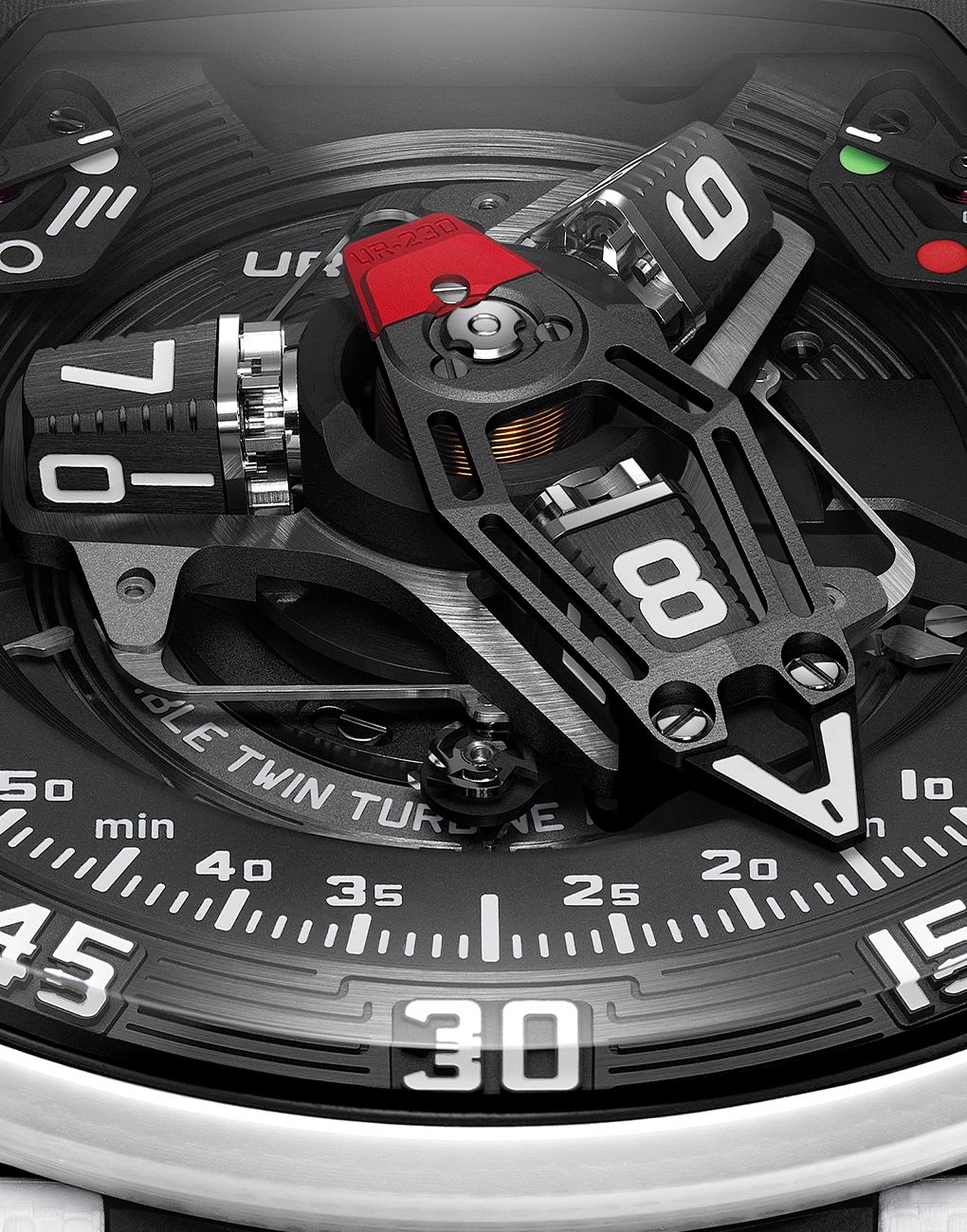
Carrying one of the most unique timekeeping displays available today, the UR-230 Polaris shows time with the help of three rotating cubes displaying four hours each, and a 3D retrograde hand for minutes. Once the hand crosses the 60-minute mark on the 120 degree scale, it catapults back to its initial position in an instant retrograde motion, which is bound to excite not just watch enthusiasts but anyone who appreciates the intricate art of micro-mechanics and precision engineering. What makes it even more interesting is the two-part motion where the hand catapults to the zero marker to display the minutes and the next cube simultaneously rotates on the satellite display to show the current hour, the brand appropriately refer to this as the ‘jump and switch’ motion.
The calibre is completely visible on the watch face and boasts a combination of finishes and decorations such as the hour markers hand-painted with Super-LumiNova, sandblasted with circular satin finish and black rhodium coating carousel, a black anodised and finely sand-blasted 3D minute hand with red anodised counterweight, polished screws in grade-5 titanium, and more. This unique timepiece wraps around the wrist with an equally interesting strap, made of white vulcanised rubber with a woven pattern, secured with Velcro.
